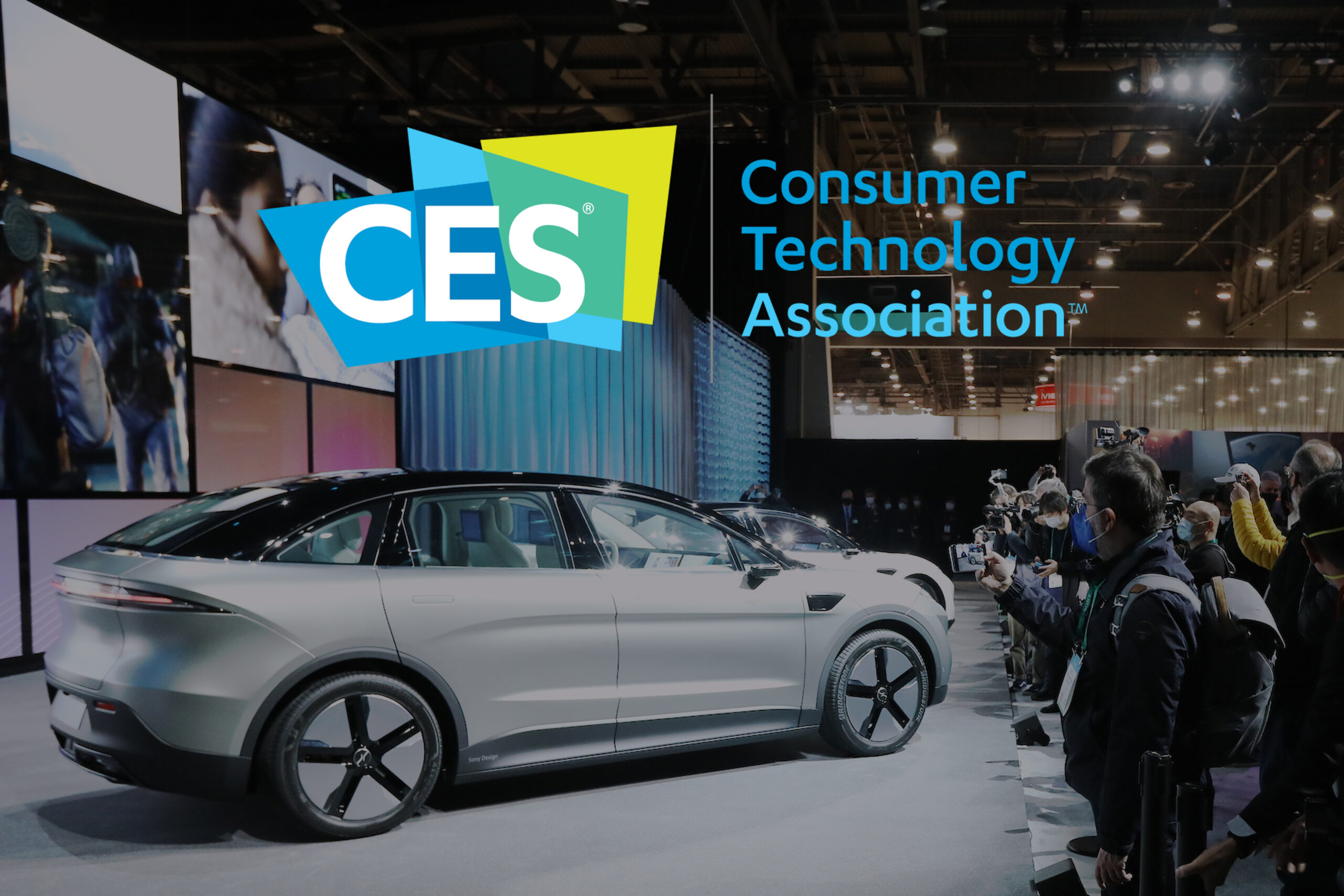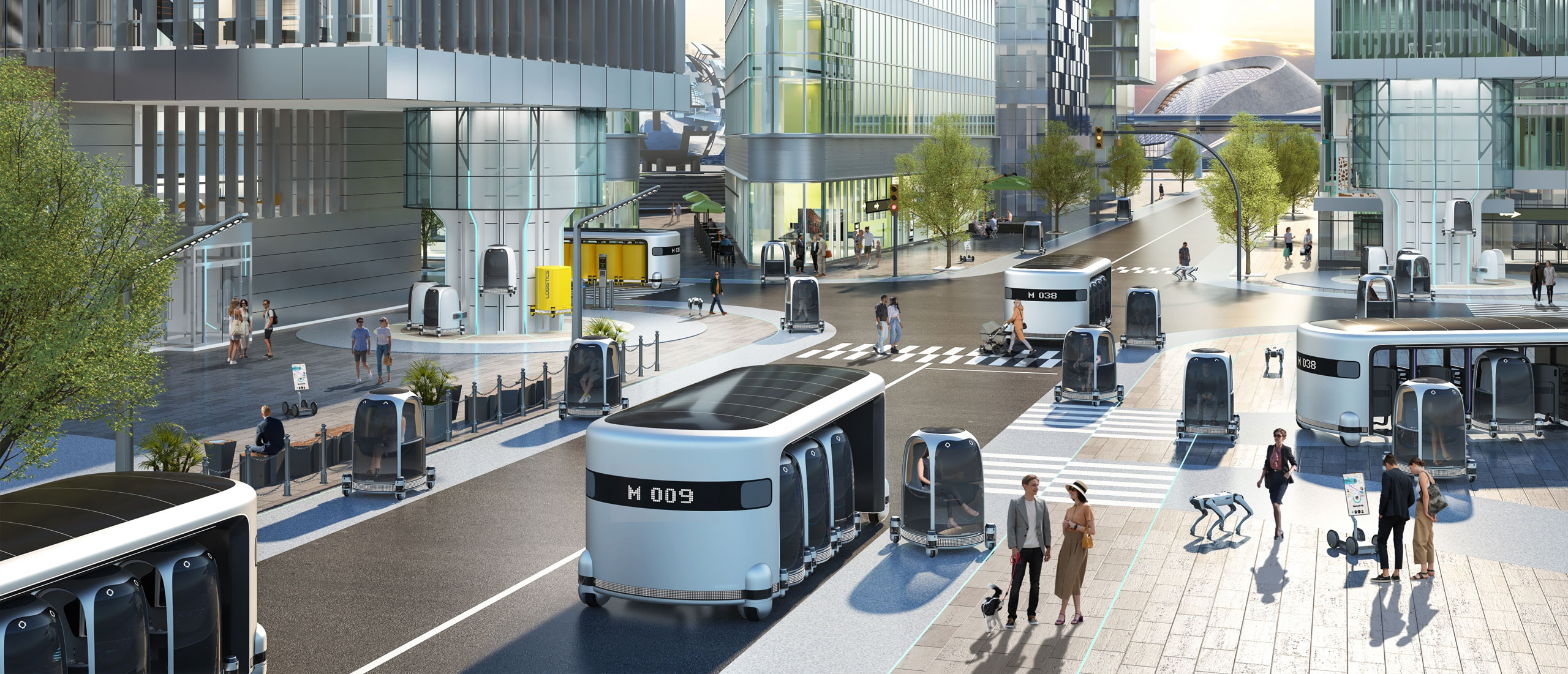S h a r e
CES 2022: your fleet future today


Posted by
Martin Brown
January 2022
There are a number of important motor shows that take place around the world. Admittedly, the world pandemic has made some more intermittent than others, but an event that has quickly become an important fixture on the automotive calendar is not focused on cars at all. It’s all about technology: the Consumer Electronics Show (or CES).
As the lines increasingly blur between vehicle manufacture and tech – ‘software on wheels’ – CES 2022 has become a crucial indicator for what is set to happen in the automotive space. It’s a good pointer for fleet managers: what you see here at CES today will be the developments that will start to appear in the next few years.
So what’s of note at this year’s CES taking place in Las Vegas?
Electric vehicles
Alright, EVs are not particularly big news in themselves these days, true, but manufacturers took the chance to display their first key models of the year at CES 2022.
Concept cars took the limelight this year, with Mercedes-Benz – not actually present at a Covid-hit CES – showcasing its ultra-efficient Vision EQXX virtually. The EV has a battery with a similar capacity to currently available models, but thanks to new technology within the cells, and a fierce focus on efficiency elsewhere, the luxury concept saloon can cover more than 620 miles on a charge – and those are ‘real-world’ miles according to Mercedes.
Just register that for a moment…a 600 plus mile range. That means I could drive the 420 miles from Fleet Alliance towers in Glasgow to the centre of London and still have battery range to spare. That really is progress.
With this sort of improvement in range and efficiency without the huge impact on charging times and weight that would be found by simply adding a larger battery (remember, the bigger the battery, the longer it takes to charge), it’s clear that developments will trickle into Mercedes-Benz’s rapidly expanding all-electric EQ range quickly.

An indicator as to those fuzzy lines between cars and electronics is most dramatically shown with the Vision-S 02 from Sony. That’s right, the electronics giant has released its second concept car, with Sony looking increasingly likely to enter the EV market sometime soon.
Sony Mobility will launch in spring 2022, though information on range and performance was notably absent. Instead, the concept is a platform for Sony’s autonomous driving technology.
Important news Stateside is that Chrysler has revealed the rather stylish Airflow concept, boasting a range of 350-400 miles on a charge. Advanced driver assistance systems feature prominently, but more importantly for fleets and drivers this side of the Atlantic is that Chrysler is part of the recently formed Stellantis Group.
As such, technology and powertrains shown on the Chrysler are likely to be seen on Peugeot, Citroen, Vauxhall, and Jeep models in Europe. Of less importance for many, but still of interest is Chevrolet’s Silverado e-Pickup – a pure-EV for the US market that loves ‘trucks’.
A range of up to 400 miles and significant payload/towing capabilities will see the Silverado compete against the best-selling Ford F150 and newcomer Rivian R1T.

Finally, BMW presented the iX Flow at CES, immediately presenting a potential headache for fleet managers, buyers, and the DVLA. Based on a standard iX, BMW has fitted E Ink Prism to the car’s paintwork; the same sort of technology used in e-readers.
At the press of a button, the iX Flow can turn from white to black, though additional colours are planned for future releases. It’s tricky to foresee practical applications for the technology, other than to contest speeding fines and other penalty charge notices. But it’s an interesting concept: could the fleet car of the future be a chameleon?
‘Self-driving technology’
Although there were some important cars on show at CES even in its trimmed down form, it’s unsurprising that some of the most noteworthy announcements come in the field of technology.
The Chrysler Airflow for example featured Stellantis’ STLA AutoDrive system, which allows for Level 3 autonomous driving – one level up from the current Level 2 where the most advanced driver assist systems sit. It allows for the driver to take their eyes off the road some of the time, though the impetus is still on a person to remain in full control of the car.

Of course, one stage further than that is Level 4 autonomous driving, which allows the car to drive itself for large parts of the journey. Sony’s Vision-S 02 was one such model that featured this standard of autonomous systems. Volvo also announced that its Ride Pilot fully-autonomous system would feature on its forthcoming pure-electric SUV, and would be first introduced on public roads in California once verified as safe.
Using Lidar sensors that continually scan the road and surrounding area ahead, the car can drive itself, and is due to be offered as a subscription service for those that order it, with hardware required already built into models.
Clearly the main restriction for these autonomous cars – and it must be said, not “driverless” systems – is not the technology in the car, but how it can be implemented in the real world. Regulations and legislation (including insurance) need to be amended to allow the vehicles on the road in the first place, and then there’s the issue of what an autonomous vehicle does when surrounded by vehicles driven by people.
Although the time when fleet managers can ease the load on their drivers by adding autonomous vehicles to their fleet is a long way off, the systems continue to be developed for future implementation. We’re a fair way off, but shows like CES clearly indicate that autonomous driving is coming. How grateful would some of your fleet drivers be for some ‘hands off’ driving time?
Auto and tech giants combine
Stellantis and Amazon have announced that the two companies will work together to incorporate services such as Amazon’s Alexa into car systems. It will see Amazon Web Services systems fitted to millions of vehicles from the likes of Citroen, Peugeot, Vauxhall/Opel, DS Automobiles, Fiat, Jeep, and Chrysler.
What it means for drivers and operators is greater levels of connectivity for vehicles, particularly when out on the road. A suite of software products will be developed between the two companies such as apps that suggest good places to stop or refuel as it learns a driver’s behaviour, or systems to improve delivery efficiency by implementing AI and connected systems for last mile deliveries. These will be updated over the air, so they remain relevant.
A similar approach is being taken with Volvo, though this time with greater integration of Google into vehicles. It already has a strong partnership with the tech giant, with Polestar models already using an infotainment system built on Android, but the latest announcement takes things further.

Volvo Cars will be the first car maker to directly integrate its cars with Google Assistant-enabled devices. This means that drivers can alter settings easily using their Google account, make greater use of voice commands, and access greater levels of detail when it comes to traffic updates for example.
Since cars are increasingly becoming connected, it will make monitoring and planning easier for managers, who will be able to call upon greater amounts of information and forecasting power, with data fed directly from the vehicles. It’s clear that telematics has a significant role in the connected cars of the future.

Finally, if you hadn’t got your fleet policies sorted for the rebound in interest in mobility, then there was Hyundai, which has just taken us to the next level: Metamobility.
Yes, Metamobility, a fusion of real and imagined. Where extended robotics technologies, such as AI and autonomous driving, merge and where robots are a medium between the real and virtual worlds.
Quite. One for the future…
You also might like…
If you liked this article then check out our posts about similar topics
FRED 82: Turning a Compliance Challenge into a Fleet Opportunity
FRED 82 may look like just another accounting standard, but for organisations running sizeable vehicle fleets, it repres...
Budget 2025 – the key points for fleets and EV salary sacrifice drivers
The 2025 Budget confirms what many in the fleet and salary sacrifice world have been expecting for some time: as electri...
Best company cars to beat BIK in 2025/2026
Sales of electric cars to fleet and business customers continue to head the new car market in 2025 After four months,...
A Great Place to Work 2025: Fleet Alliance
We’ve done it again! Fleet Alliance is A Great Place to Work - officially We’ve been certified A Great Place to ...
First Drive: The Y Factor – Why Tesla’s Shape Shift is Turning Heads
I didn’t want to love it I did The new-shape Model Y fixes the looks, elevates the drive, and makes a strong case on p...
The top 10 fleet cars from the Munich Motor Show
The Munich Motor Show - which is officially known as IAA Mobility - recently took place It’s a hybrid show demonstrati...
Listening to Our Clients: The Real Demands of Modern Fleet Management
At Fleet Alliance, we don’t believe in making assumptions about what our clients want Instead, we ask them—regularly...
Fleet management: it’s in our DNA
We’ve had some great recognition recently There was the Best Workplace for Women in July; this was followed by being n...
Ready to make the management of your fleet more efficient?
Request a call back
